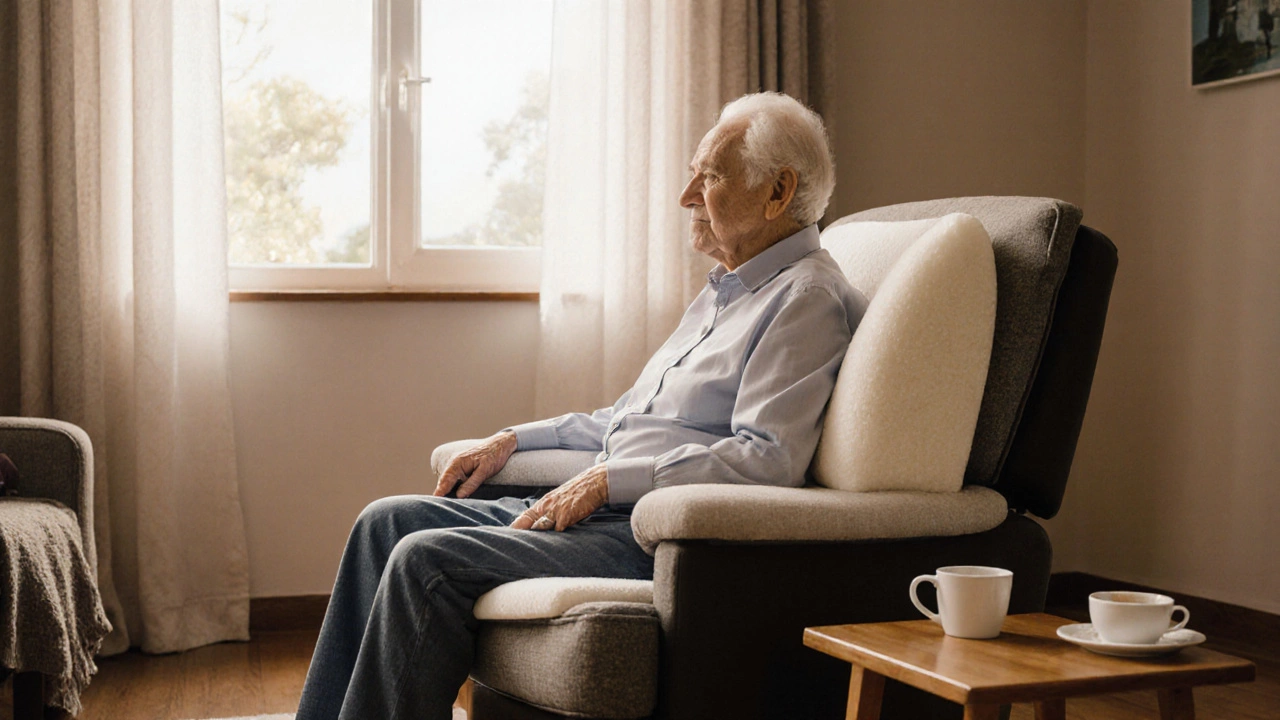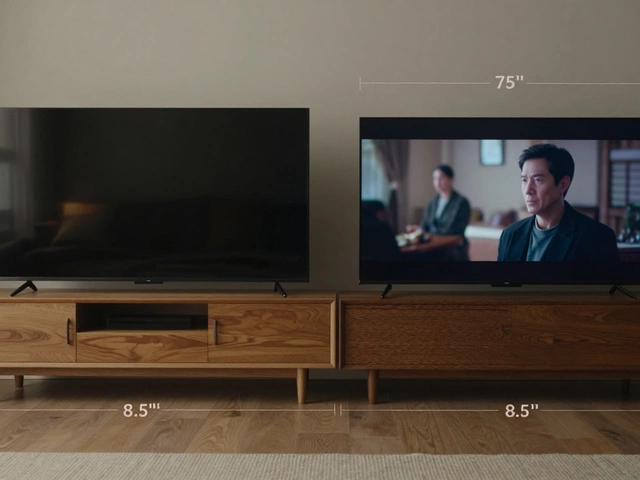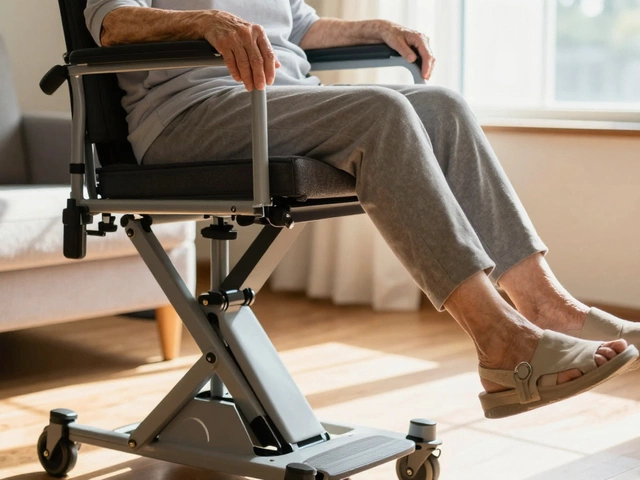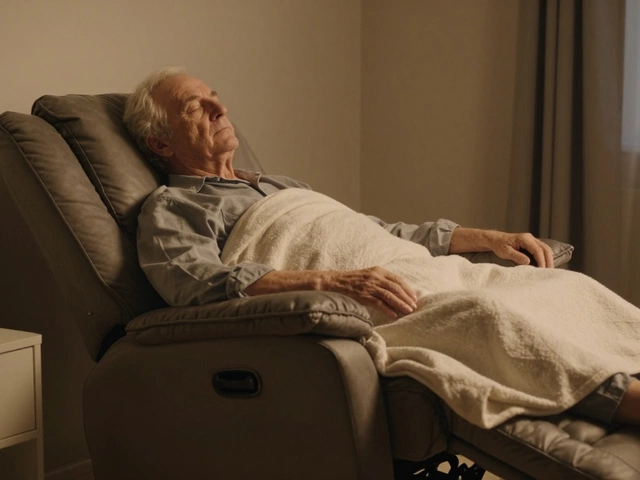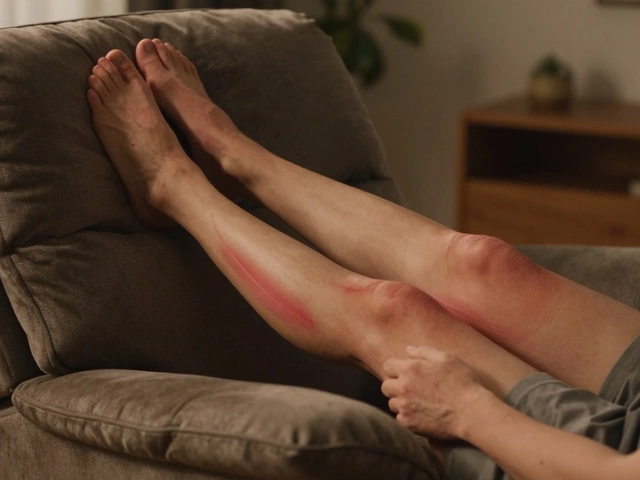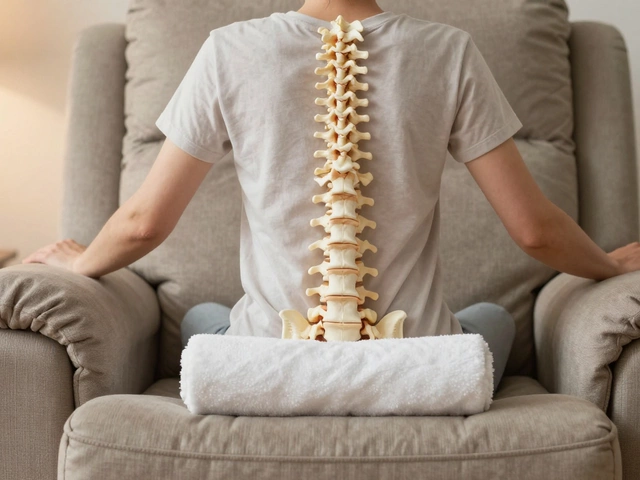Recliner Fit Calculator
This tool assesses your recliner's fit using three critical measurements from the article. Enter your values to determine if your chair meets senior safety standards.
Measure Your Recliner
Results
Enter measurements to see results
If your elderly parent or loved one keeps sliding down in their recliner, you’re not alone. It’s not just about comfort-it’s about safety. Sliding down can lead to falls, pressure sores, or even difficulty getting up. The problem isn’t laziness or poor posture. It’s usually a mismatch between the chair and the person’s body. The good news? You can fix this without buying a whole new chair.
Why Elderly People Slide Down in Recliners
Most recliners are designed for average body types, not seniors with reduced muscle tone, limited mobility, or spinal curvature. When someone sits back, gravity pulls them downward. Without enough support behind the lower back or under the thighs, their body naturally sinks. This is worse if they have arthritis, Parkinson’s, or have lost weight after illness. The seat depth might be too long, the backrest too flat, or the armrests too low to help them push up.
One study from the University of Michigan’s Aging Research Center found that 68% of seniors who use recliners daily report slipping or sliding at least once a week. Many don’t mention it because they think it’s normal. But it’s not. Sliding increases fall risk by 40% when getting in or out of the chair.
Check the Recliner’s Design First
Not all recliners are made the same. Start by checking three key features:
- Seat depth: Measure from the back of the seat to the front edge. For most seniors, it should be no more than 18 inches. If it’s longer, their legs dangle, and their pelvis tips backward, causing them to slide.
- Backrest angle: A recliner with a 110-120 degree recline is ideal. Anything flatter than 100 degrees forces the spine into a C-curve, making it hard to sit upright.
- Armrest height: Arms should be level with the person’s forearms when seated. If they’re too low, they can’t use them to push up. If they’re too high, the shoulders hunch.
If your recliner fails any of these checks, it’s time to adjust or replace it. Don’t waste money on expensive lifts or motorized chairs unless you’ve tried these fixes first.
Use a Lumbar Support Cushion
The most common fix? A firm lumbar roll. Most recliners have a flat back. Seniors need support where the spine curves inward-right above the waist. A rolled towel won’t cut it. You need a cushion made of high-density foam or memory foam with a non-slip cover.
Look for one that’s 4-6 inches tall and fits snugly behind the lower back. Brands like ComfiLife and Medline make models designed specifically for recliners. Place it so the top edge hits just below the shoulder blades. This keeps the pelvis tilted forward, preventing the body from sinking.
One caregiver in Ohio told us her 82-year-old mother went from sliding to sitting upright for hours after adding a lumbar cushion. “It’s like she got a new chair,” she said.
Add a Thigh Support Pad
Sliding often starts at the thighs. If the seat is too deep or the cushion has sunk, the thighs lose contact with the seat edge. That removes the natural stop that keeps the body from sliding down.
Solution: A thigh support pad. These are wedge-shaped cushions that fit under the thighs, just behind the knees. They lift the legs slightly and create a barrier. Look for ones with a non-slip bottom and a washable cover. You can find them at medical supply stores or online retailers like Amazon or McKesson.
Don’t use regular pillows. They compress too fast and slide around. A firm foam wedge holds its shape and stays put.
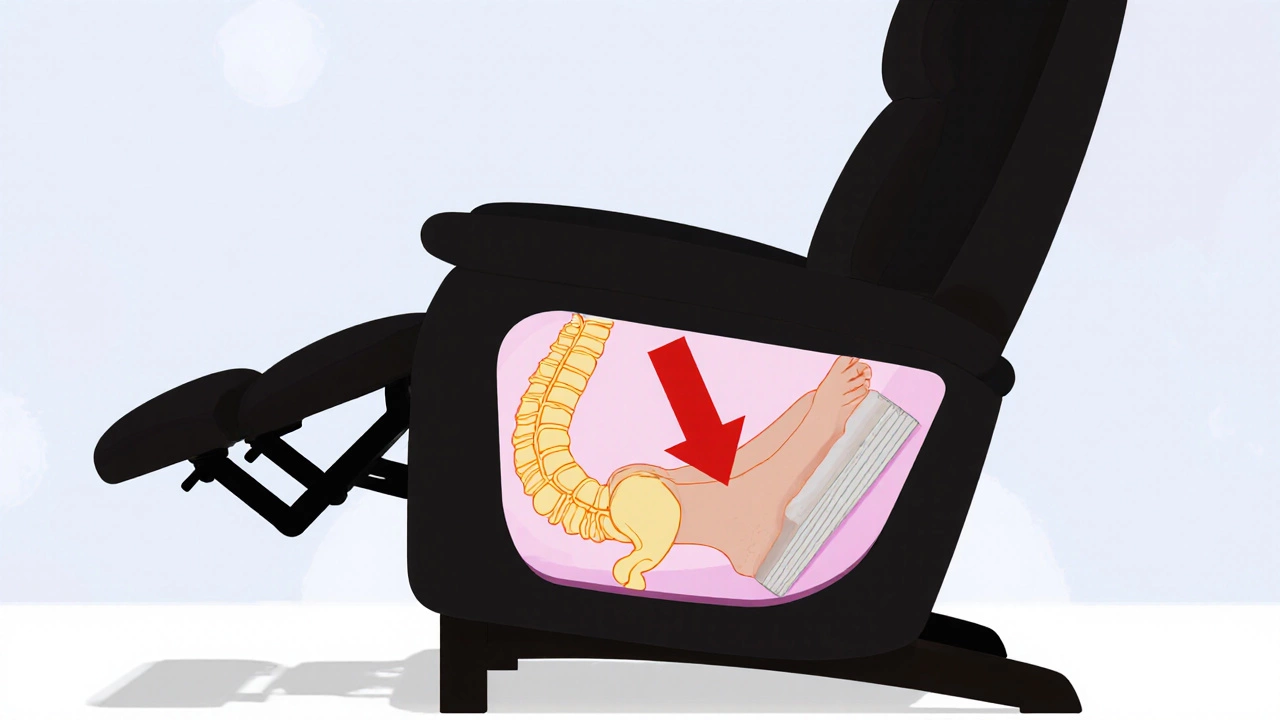
Install a Non-Slip Mat Under the Cushion
Even with good support, the seat cushion can shift. That’s why you need a non-slip mat underneath. Use a rubberized mat designed for furniture-like the ones used under area rugs. Cut it to fit the bottom of the seat cushion. It won’t change how the chair feels, but it’ll stop everything from creeping forward.
One trick: Buy a roll of non-slip shelf liner from the kitchen aisle. It’s cheap, easy to cut, and grips both the chair frame and the cushion. Place it under the entire seat cushion, not just the edges.
Adjust the Reclining Mechanism
Some recliners have adjustable tension knobs or levers. If the chair reclines too easily, it lets the user sink deeper than intended. Check the manual for how to tighten the mechanism. Even a small increase in resistance can make a big difference.
If your recliner doesn’t have this feature, try flipping the seat cushion over. Many cushions have a firmer side underneath. Rotating it can restore lost support.
Consider a Recliner with a Rise-and-Fall Feature
If you’ve tried everything and sliding still happens, it’s time to think about a new chair. Look for a power recliner with a rise-and-fall function. These chairs lift the entire seat slightly when the person stands up, reducing strain on the knees and hips. They also tilt the seat forward to help the user push off.
Brands like La-Z-Boy, Pride Mobility, and Golden Technologies make models with this feature. Prices start around $800. But if your loved one struggles to stand from a regular chair, this isn’t a luxury-it’s a safety tool.

What to Avoid
Don’t use seat belts or harnesses. They’re uncomfortable, can cause skin damage, and aren’t designed for home use. Don’t pile on too many pillows-they collapse and create uneven pressure points. And never ignore the chair’s weight limit. If your loved one weighs more than 250 pounds, a standard recliner may not support them safely.
Quick Checklist for Immediate Fixes
- Measure seat depth-should be ≤18 inches
- Add a firm lumbar cushion (4-6 inches tall)
- Place a foam thigh wedge behind the knees
- Put non-slip shelf liner under the seat cushion
- Check if recliner tension can be tightened
- Flip the seat cushion if it’s worn
Do these five things, and you’ll likely see improvement within a day. No need for expensive gadgets or major changes.
When to Replace the Recliner
If your loved one has lost more than 10 pounds in the past year, or if they have spinal stenosis, hip replacements, or severe osteoporosis, a standard recliner may no longer be safe. Look for a chair with:
- High backrest (supports head and neck)
- Wide seat (at least 20 inches)
- Power lift mechanism
- Heat and massage options (helps with circulation and stiffness)
- Washable, breathable fabric (prevents sweating and skin breakdown)
Medicare may cover part of the cost if a doctor writes a prescription for a “mobility aid.” Ask your doctor about DME (Durable Medical Equipment) coverage.
Final Tip: Make It a Routine
Check the chair every week. Cushions flatten. Non-slip mats shift. The person’s posture changes. A quick adjustment-like repositioning the lumbar pillow or tightening the recliner-can prevent a fall before it happens.
Sliding isn’t inevitable. With the right setup, your loved one can sit comfortably, safely, and with dignity.
Why does my elderly parent keep sliding down in the recliner?
Sliding happens because most recliners aren’t designed for seniors with reduced muscle tone, weight loss, or spinal changes. The seat may be too deep, the back too flat, or the armrests too low. Without proper support for the lower back and thighs, gravity pulls the body downward.
Can I use regular pillows to stop sliding?
No. Regular pillows compress quickly, lose shape, and slide around. They don’t provide the firm, consistent support seniors need. Use high-density foam cushions instead-like lumbar rolls or thigh wedges designed for recliners.
Is a lift chair worth the cost?
If your loved one struggles to stand from the chair, yes. Power lift recliners reduce fall risk by helping users rise safely. Medicare may cover part of the cost if a doctor prescribes it as a mobility aid. Prices start around $800, but safety and independence are priceless.
How do I know if my recliner is the right size?
Check three things: seat depth (should be 18 inches or less), backrest angle (110-120 degrees is ideal), and armrest height (level with forearms when seated). If the person’s feet don’t touch the floor or their knees hang over the edge, the chair is too deep.
Can I make my current recliner safer without buying new furniture?
Yes. Add a firm lumbar cushion, a foam thigh wedge, and non-slip shelf liner under the seat. Flip the cushion if it’s worn. Tighten the recliner mechanism if possible. These fixes cost under $50 and often solve the problem immediately.

